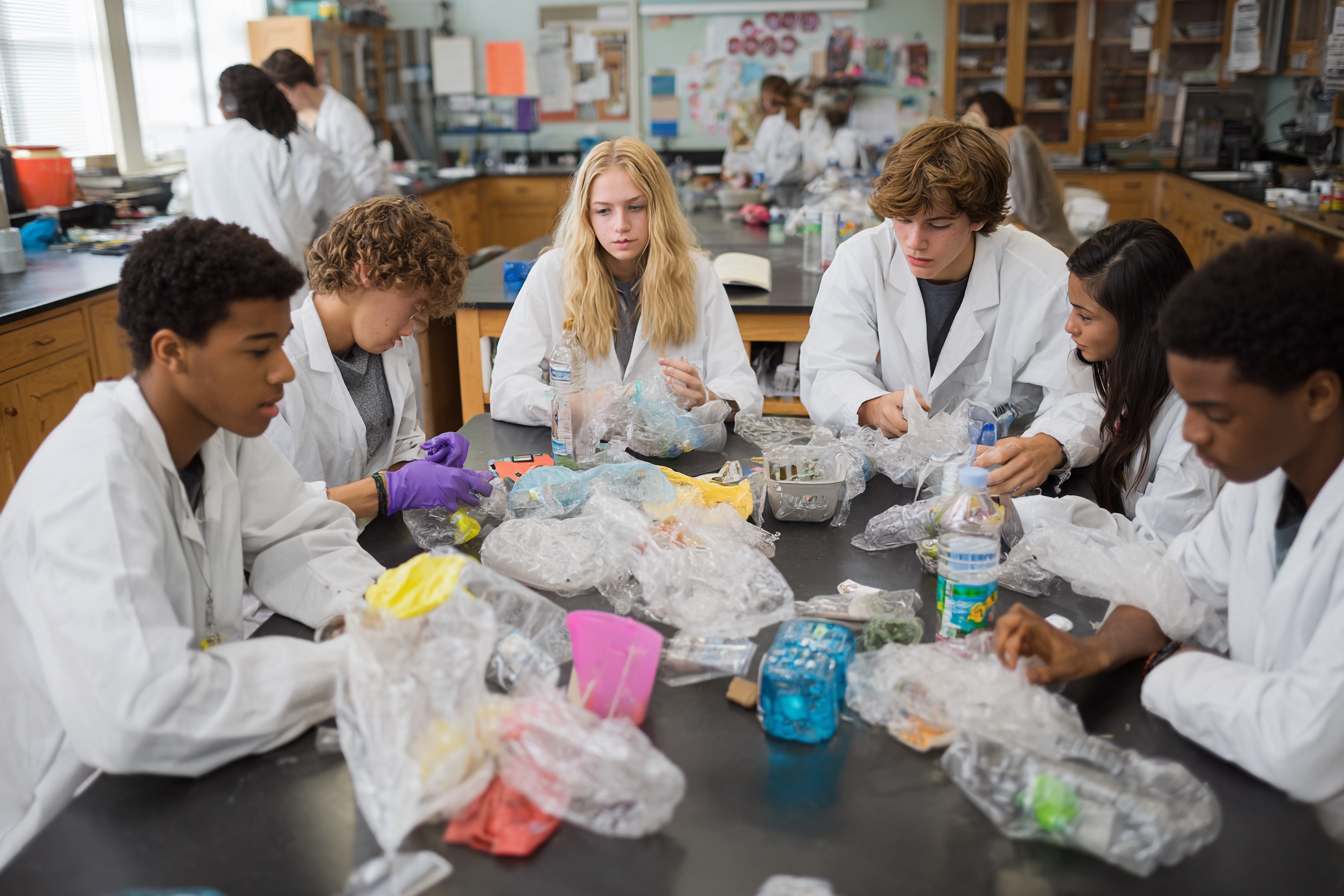Lesson Plan (Grades 9–12): Biodegradable Plastics Lab – Synthesizing and Testing Sustainable Polymers
High school lab: synthesize PHA and starch-glycerol bioplastics, test tensile strength, track compost biodegradation, and compare life-cycle impacts of sustainable polymers.

Lesson Title: Biodegradable Plastics Lab – Synthesizing and Testing Sustainable Polymers
Grade Level: Grades 9–12
Subject Area: Chemistry (Polymer Science) / Biology (Microbiology) / Environmental Science / Engineering
Overview Every year, millions of tons of conventional plastics enter landfills or the environment, where they can persist for centuries, harming wildlife and ecosystems. Biodegradable plastics, derived from biological feedstocks or synthesized by microbes, offer a sustainable alternative by breaking down into harmless byproducts under composting conditions. In this hands-on, multi-week STEM investigation, students will produce two types of bioplastics: polyhydroxyalkanoate (PHA) via microbial fermentation and starch–glycerol films via thermal gelatinization. Learners will cast and cure thin polymer sheets, then perform mechanical testing to determine tensile strength, elongation at break, and Young’s modulus. Simultaneously, they will evaluate degradability by burying samples in a classroom compost setup, measuring mass loss over time. Finally, teams will conduct a simplified life-cycle analysis comparing the energy inputs, greenhouse gas emissions, and end-of-life impacts of bioplastics versus conventional plastics. Through data-driven analysis, critical reflection, and iterative design proposals, students will develop a deep understanding of polymer chemistry, ecological cycles, and sustainable engineering solutions.
Objectives and Standards
Learning Objectives
- Polymer Chemistry: Explain PHA biosynthesis pathways in bacteria and starch gelatinization and retrogradation processes in detail, including chemical structures and intermolecular forces.
- Bioplastic Synthesis: Conduct a controlled microbial fermentation to generate PHA polymer or prepare a starch–glycerol solution, cast uniform films, and cure under specified conditions.
- Mechanical Testing: Use a tensile tester to measure tensile strength (MPa), elongation at break (%), and Young’s modulus (MPa) of bioplastic samples, interpreting stress–strain behavior.
- Biodegradation Assessment: Evaluate biodegradability by burying bioplastic specimens in compost, measuring percentage mass loss, and documenting visual/structural changes over a four-week period.
- Life-Cycle Analysis: Collect and analyze data on energy consumption, solvent use, and composting emissions to compare cradle-to-grave impacts of bioplastics with petroleum-derived plastics.
- Design Improvement: Propose and justify modifications—such as varying plasticizer ratio, blending polymers, or altering fermentation conditions—to optimize mechanical performance and biodegradation rate.
Standards Alignment
- Next Generation Science Standards (NGSS)
- HS-PS1-7: Use mathematical representations to support explanations of the chemical and physical properties of materials.
- HS-LS2-7: Design, evaluate, and refine a solution for reducing the impacts of human activities on the environment, specifically targeting plastic pollution.
- Common Core State Standards – Mathematics
- HSS-IC.B.6: Evaluate reports based on data, including mechanical test results and life-cycle metrics.
- Computer Science Teachers Association (CSTA) K–12 Standards
- 3A-IC-24: Design and iteratively develop modular programs or spreadsheet models to analyze experimental results.
- NGSS Crosscutting Concepts
- Systems and System Models: Modeling the production, use, and degradation phases of bioplastic materials as an interconnected system.
- Stability and Change: Understanding how polymer composition and environmental conditions influence mechanical stability and degradation dynamics.
